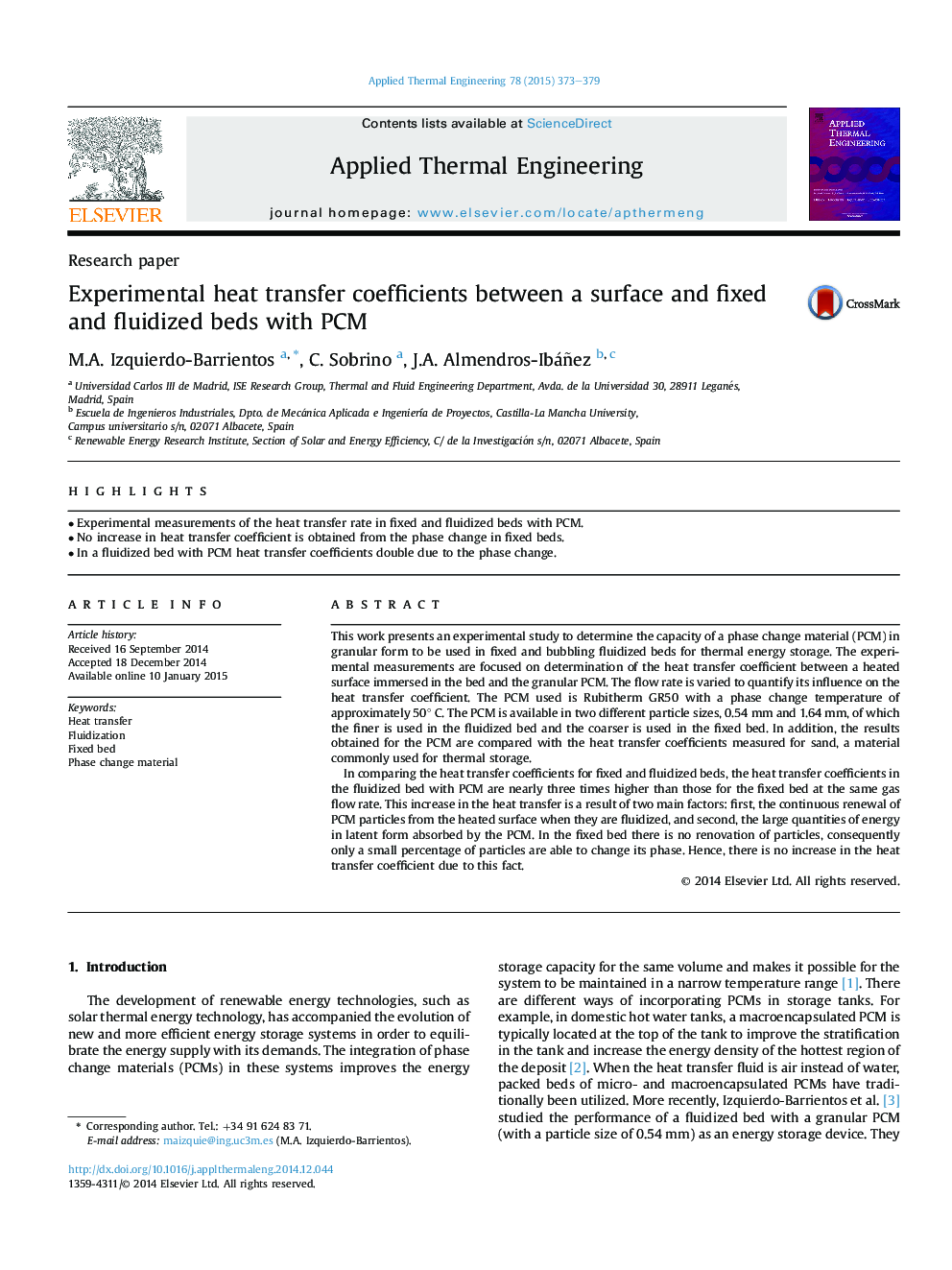| Article ID | Journal | Published Year | Pages | File Type |
|---|---|---|---|---|
| 7048950 | Applied Thermal Engineering | 2015 | 7 Pages |
Abstract
In comparing the heat transfer coefficients for fixed and fluidized beds, the heat transfer coefficients in the fluidized bed with PCM are nearly three times higher than those for the fixed bed at the same gas flow rate. This increase in the heat transfer is a result of two main factors: first, the continuous renewal of PCM particles from the heated surface when they are fluidized, and second, the large quantities of energy in latent form absorbed by the PCM. In the fixed bed there is no renovation of particles, consequently only a small percentage of particles are able to change its phase. Hence, there is no increase in the heat transfer coefficient due to this fact.
Related Topics
Physical Sciences and Engineering
Chemical Engineering
Fluid Flow and Transfer Processes
Authors
M.A. Izquierdo-Barrientos, C. Sobrino, J.A. Almendros-Ibáñez,
